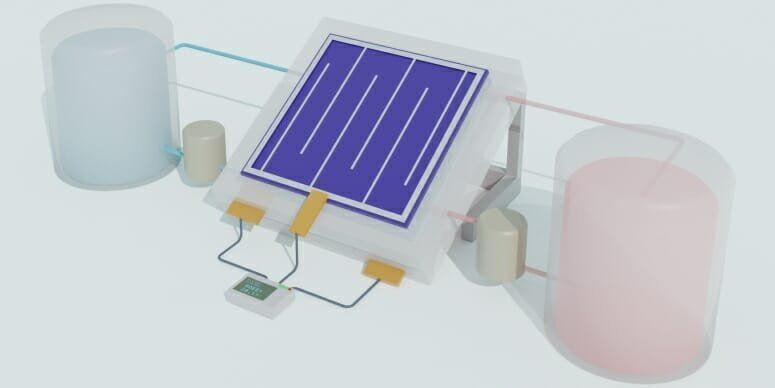A US-led research collaboration based out of the University of Wisconsin-Madison has claimed a breakthrough in ultra-efficient energy storage that can generate, store and re-deliver renewable electricity from the sun in one device.
The device, a solar flow battery, is a group effort from the University’s Song Jin lab, in collaboration with researchers from the University of New South Wales and the University of Sydney in Australia, Utah State University, King Abdullah University of Science and Technology in Saudi Arabia and the City University of Hong Kong.
It combines the advantages of photovoltaic cells that convert sunlight into electricity – in this case, halide perovskites with an added layer of silicon – with the advantages of flow batteries, which use tanks of chemicals that can react to produce electricity and be recharged by the solar cells.
The research team says that the resulting solar flow battery has set a new record efficiency of 20 per cent, besting most commercially available silicon solar cells, and is 40 per cent more efficient than the previous record holder for solar flow batteries, also developed by the Jin lab.
“Thanks to a good match between the solar cell and the flow battery, the winning device maintained a high efficiency over hundreds of hours and hundreds of charge-discharge cycles while retaining most of its capacity,” the report said.
The challenge, now, is to transform the solar flow batteries into practical renewable-energy solutions, starting with increasing the size and scale of the current small prototypes produced by the research lab.
“Our eventual goal, if we can make this practical, is to target solar home systems,” said lead author of the study, UW–Madison graduate student Wenjie Li. “People who don’t have electrical grid access could use this device to have reliable electricity.”

One of the big problems of solar energy that uses the battery as a storage medium is the low durability of the battery. Reducing the need to replace these batteries is a major evolution and even with an efficiency increase of 20% is even better. Congratulations to all the universities involved in this research, as their success generates great benefits for everyone.